| HOME |
|---|
Hydra
The Water Snake
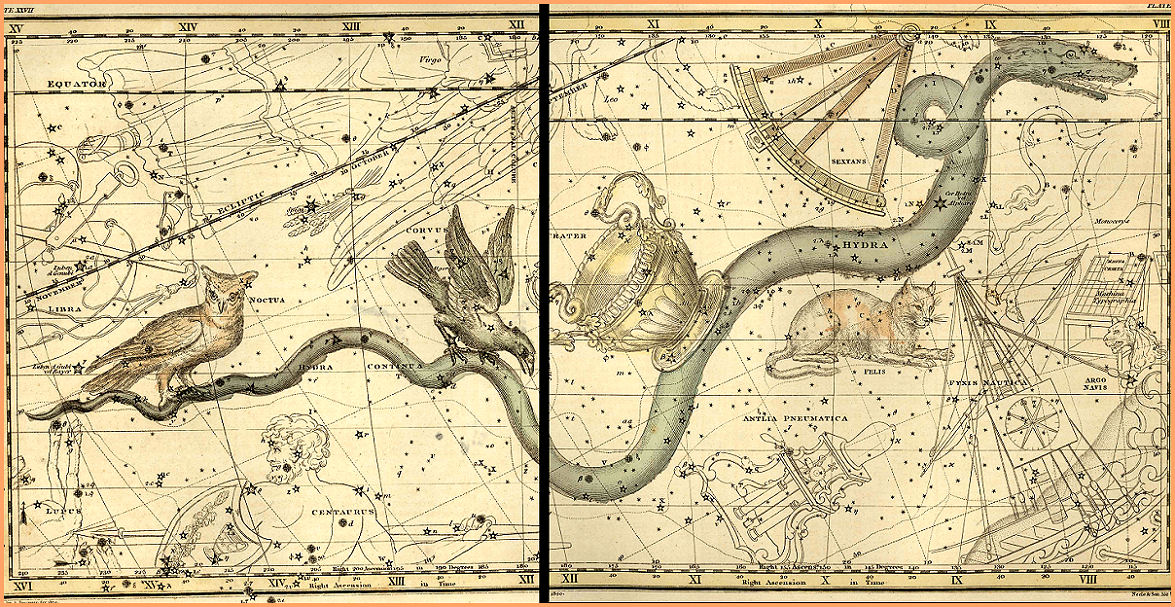
Hydra - Celestial Atlas by Alexander Jamieson - 1822
You've got the teeth of a Hydra upon you
You're dirty sweet and you're my girl.
T. Rex - Bang A Gong(Get It On) - 1971
| HOME |
|---|

Hydra is the largest and longest constellation in the sky. It stretches fully one quarter of the way around the horizon, and takes up two full pages of Alexander Jamieson's 1822 Celestial Atlas. Although the celestial Hydra has only one head, its mythological namesake apparently had many, as well as poisonous breath and blood. It guarded one of the entrances to the underworld, and the killing of this fearsome creature was the second of the twelve labours of Hercules. At first Hercules had trouble dealing with the monster, because every time he chopped off a head, two more would grow in its place. Hercules finally discovered that burning the stump of a severed head would stop it from growing again, and he defeated the monster. The gods placed it in the sky to commemorate his victory.
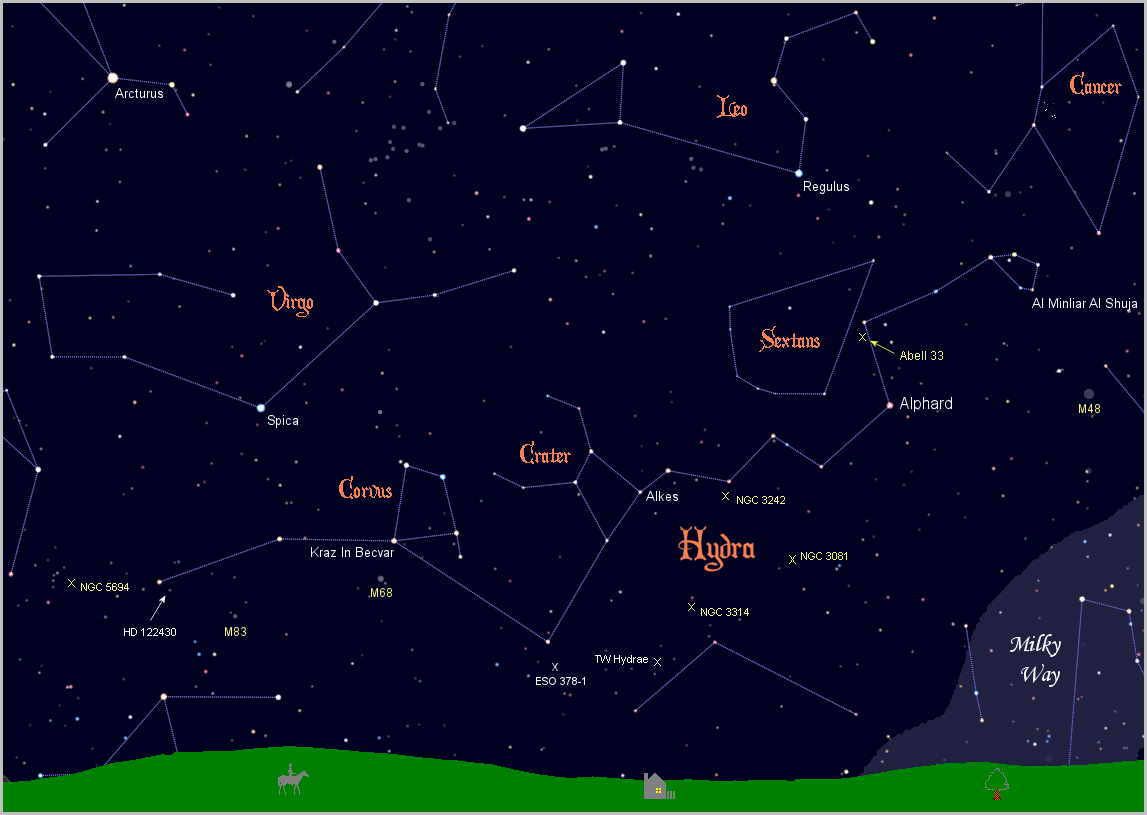
The stars of Hydra look unremarkable at first, but if you spend a few moments gazing just above the southern horizon on a balmy spring night, you will sooner or later make out the long, meandering form of the snake, with the crow and the goblet on its back, and you will never see that part of the night sky the same again.
The alpha star in the constellation Hydra is Alphard, which means the solitary one, because it is indeed the only bright star in that region of the sky. It is also known as Cor Hydrae, the heart of the Hydra. It is a K3III orange giant with a magnitude of 2.0, about 177 light years away.
Although Hydra borrows the stars Alkes and Kraz In Becvar from Crater and Corvus, they are technically outside the boundaries of Hydra.
According to Richard Allen's Star Names, the brighter stars between Alphard and the Crater were collectively known to the ancients as Al Sharasif, The Ribs.
The only other named star in the constellation is the dim, 4.5 magnitude Al Minliar Al Shuja, which means, the nose of the snake. It is a K2III orange giant, a distant 370 light years away.
A faint little K6V orange main sequence star designated TW Hydrae is of great interest to astronomers because at a distance of 176 light years it is the closest T Tauri star to our solar system. T Tauri stars are young stars that have not yet achieved nuclear fusion, and shine solely from the energy of gravity and the friction of colliding particles. They are stars in their formative years, still drawing in matter from the accretion disks that surround them, also known as protoplanetary disks. The disk around TW Hydrae has a gap about the same distance from the star as Earth is from the Sun, suggesting the possible formation of an Earth-like planet.
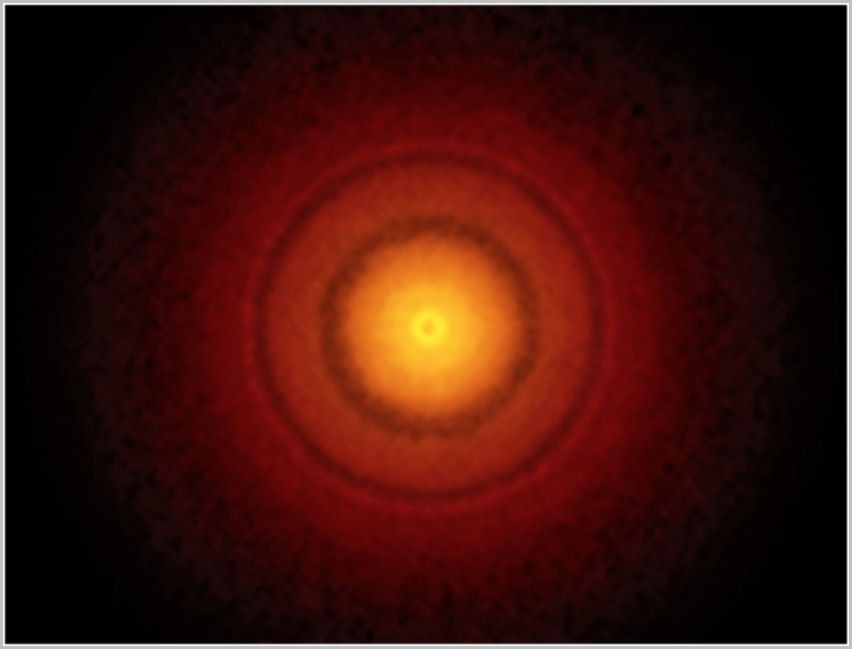
Hydra has no less than 16 stars that have confirmed planetary systems, but only one of these stars is visible with the naked eye, and you'll need a good dark night to see it. The star is HD 122430, near the tail of the snake, a K2III orange giant with a magnitude of 5.47. It has a planet almost four times larger than Jupiter, orbiting its star every 345 days at about the same distance Earth orbits the Sun. The system is quite far away at a distance of 440 light years.
Very much closer at a scant 30 light years away, yet well beyond visual range at magnitude 9.81, is Gliese 433. It is an M1V red main sequence star, with a super earth only 5.3 times larger than our home planet. The bad news is the planet is in a tight seven day orbit only 5.4 million miles from its star, which would make it exceedingly hostile to any kind of life as we know it.
For more information on these and other extrasolar planets, visit NASA's New Worlds Atlas, and The Open Exoplanets Catalogue.
M48 (NGC 2548) is an open star cluster located about 2,000 light years away. With a magnitude of 5.8, the cluster contains about 80 stars, estimated to be 300 million years old.
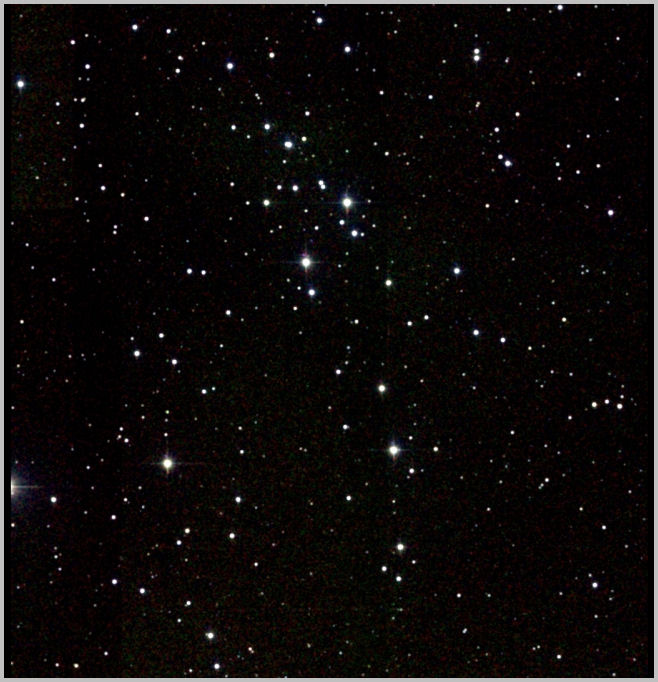
Globular star cluster M68 (NGC 4590) is 33,000 light years away with a magnitude of 7.3.
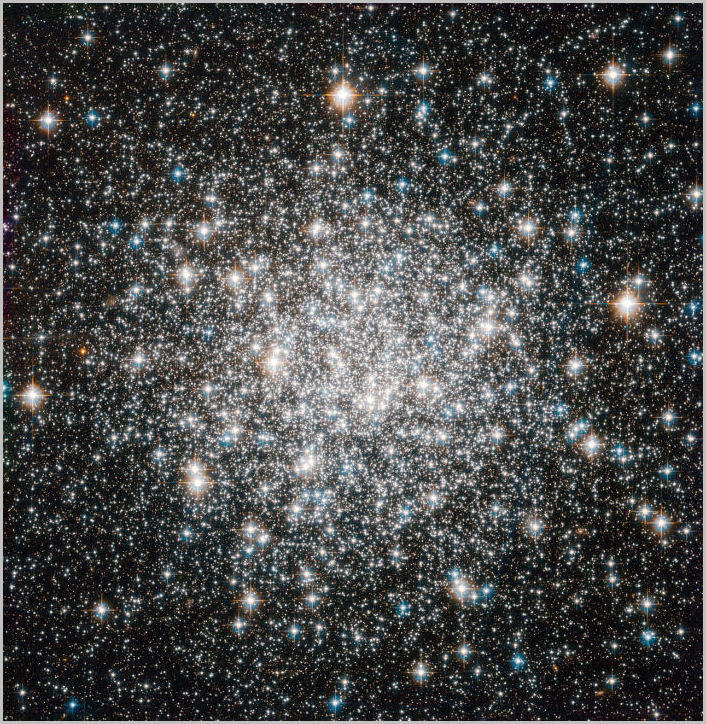
Globular cluster NGC 5694 is very much farther away at a distance of 105,000 light years, and very much dimmer with a magnitude of 10.2. It is one of the most remote globular clusters in our galaxy. It is also one of the smallest, containing only about 100,000 stars. The cluster's most unique feature is that it is leaving our galaxy and heading off into intergalactic space, moving at the unusually high velocity of 614,250 mph (982,800 kph), well beyond the escape velocity of the galaxy.
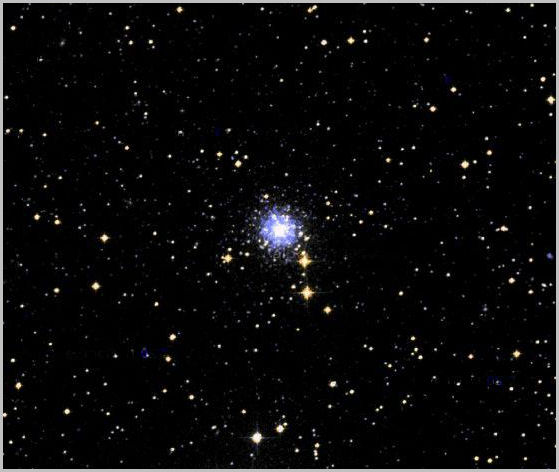
Coming in at magnitude 8.6 is NGC 3242, known as The Ghost of Jupiter, for its Jovian-like appearance in a small scope. The Hubble Space Telescope reveals its true nature as a dying star - clearly visible in the centre of the image - shedding its outer layers as it runs out of fuel and slowly cools. The nebula is 1,400 light years away.
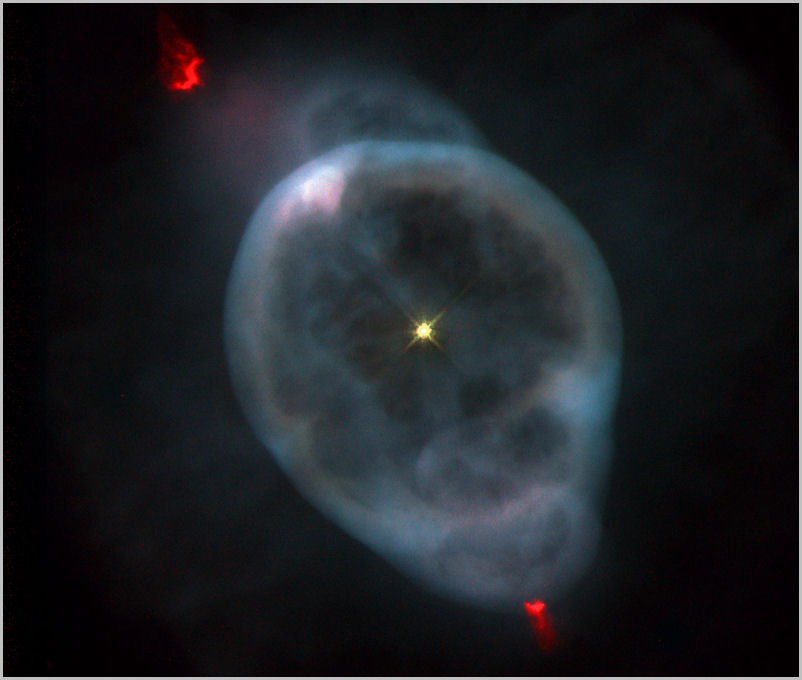
Much farther and much dimmer is the ejected gas cloud of another dying star, Abell 33. At a distance of 2,700 light years and a magnitude of 13.4. it is in the realm of large telescopes. The bright star on the lower right giving the nebula a diamond ring effect is seventh magnitude HD 83535.
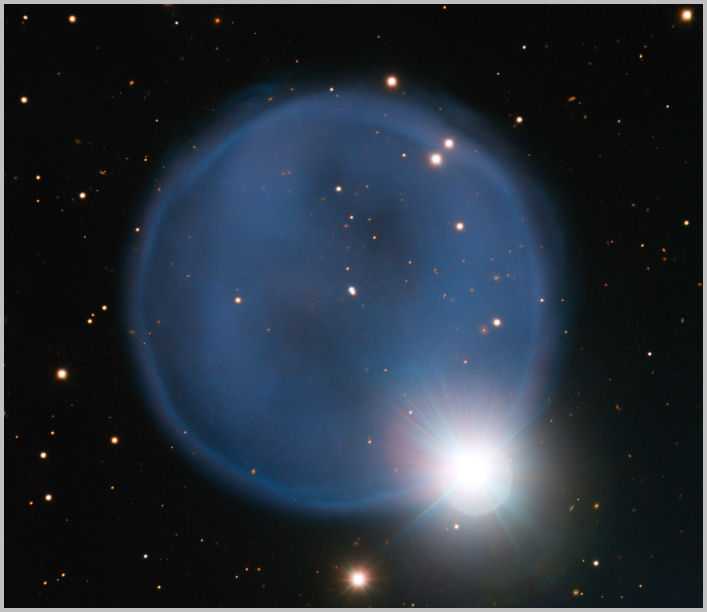
Farther away still is yet another ghostly cloud of gas surrounding a dying star, ESO 378-1. It is 3,500 light years away with a very faint magnitude of 17.4.
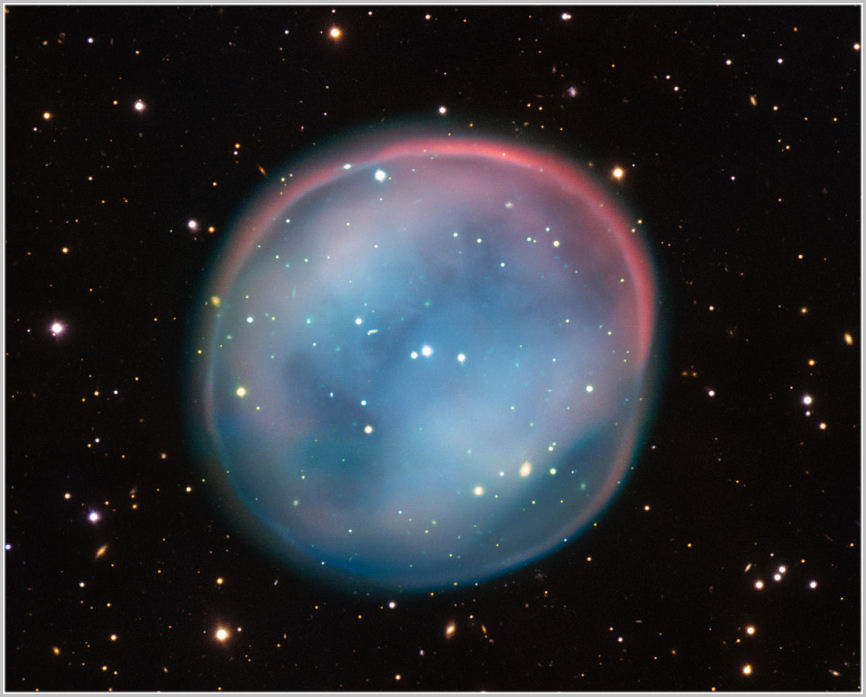
Moving outside our own galaxy there is at least one other galaxy in reach of amateur scopes, M83 (NGC 5236), the Southern Pinwheel Galaxy, one of the closest and brightest spiral galaxies in the southern sky. It is only 10 million light years away, quite close as galaxies go, giving it an apparent magnitude of 7.54. Like our Milky Way, it is a barred spiral galaxy, but less than half the size with a diameter of 40,000 light years.
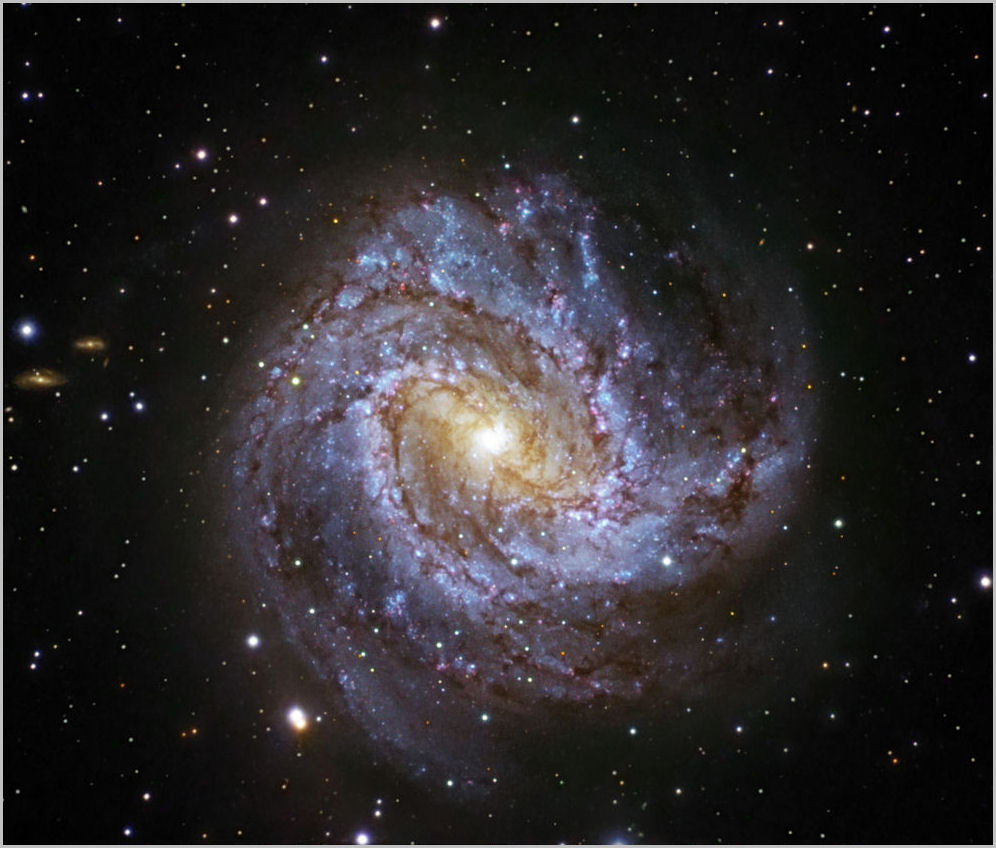
More than twice as far away at 22 million light years is spiral galaxy NGC 3621. At magnitude 9.7 it is a challenge for smaller scopes.
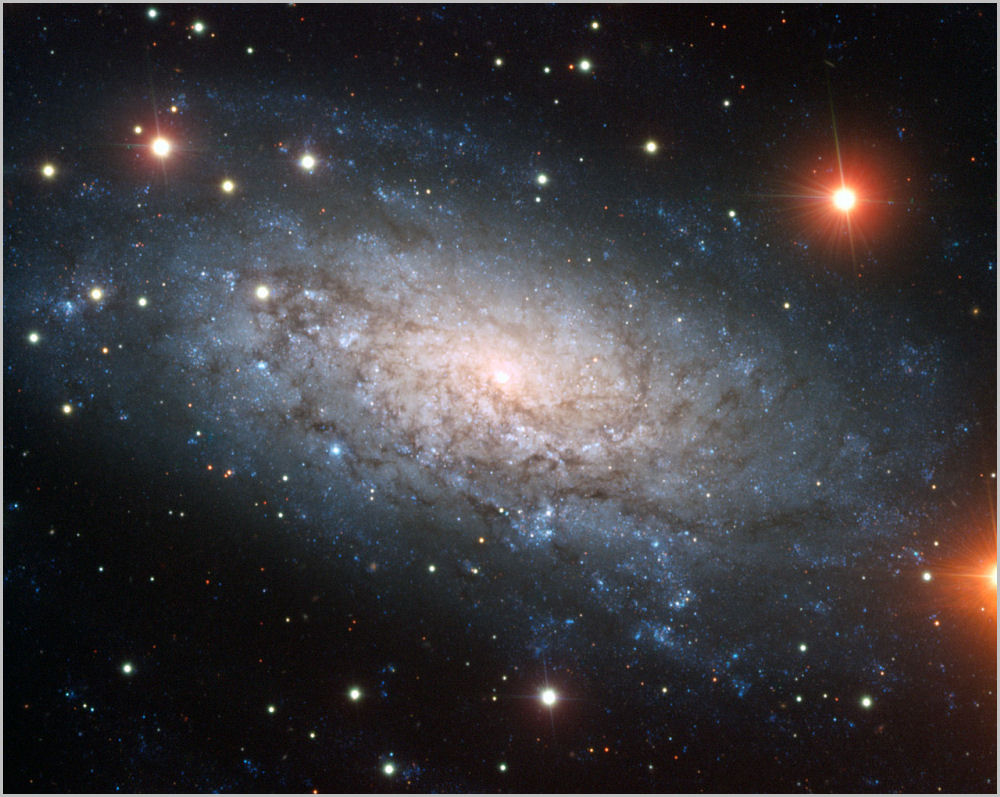
Jumping way out to 107 million light years and firmly into the realm of large telescopes we find NGC 3081. With its distinctive bright core and outer loop, it has a magnitude of 12.5.
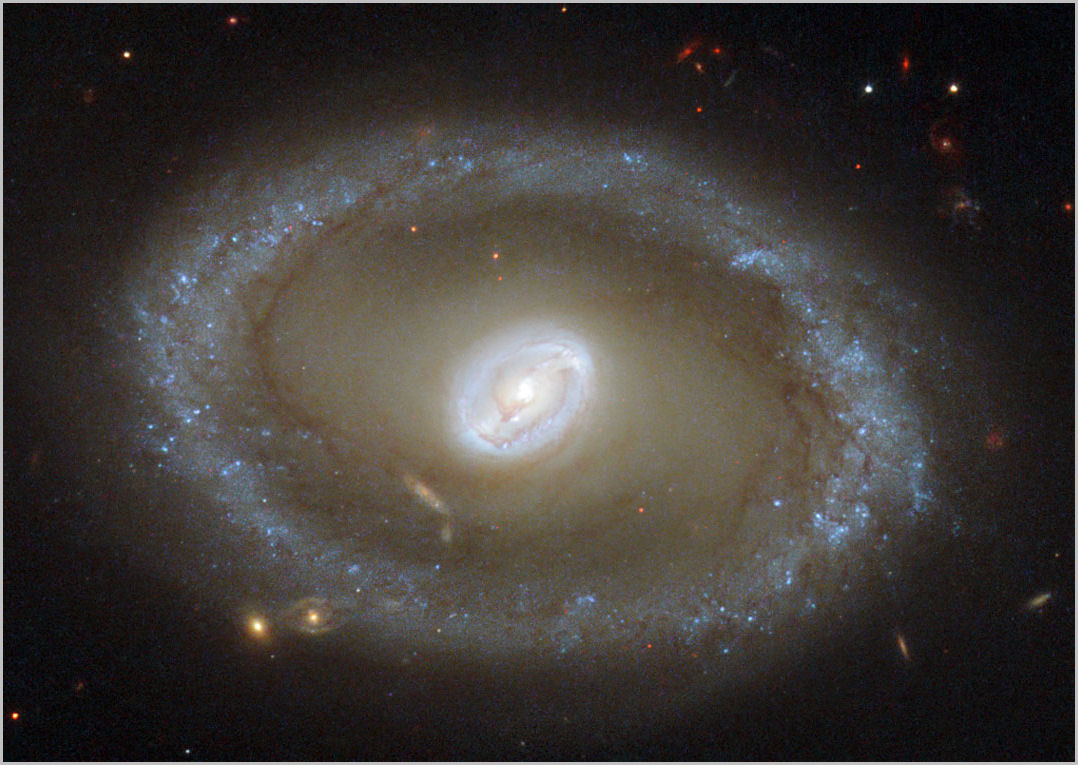
At 117 million light years we come across NGC 3314, with a magnitude of 14.0. It is two overlapping galaxies that appear to be colliding, but are actually very far apart. NGC 3314a is in front, 117 million light years from us, and NGC 3314b is in a direct line of sight behind it, about 23 million light years farther away.
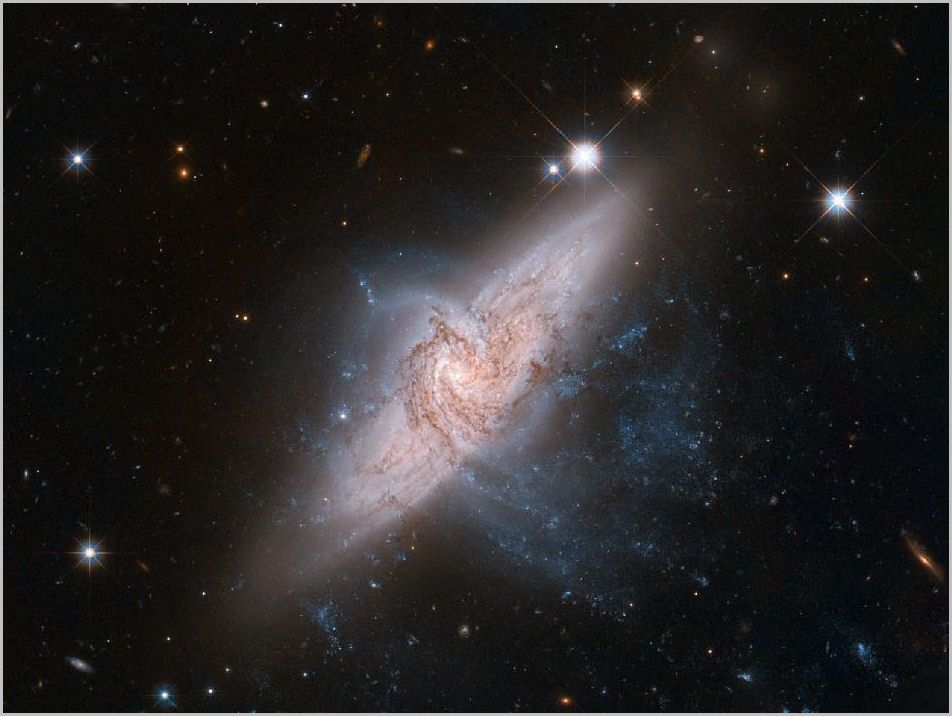
Finally, out at the very great distance of 150 million light years, at magnitude 13.4, is the unusual spiral galaxy ESO 510-13, with its highly warped dust lane.
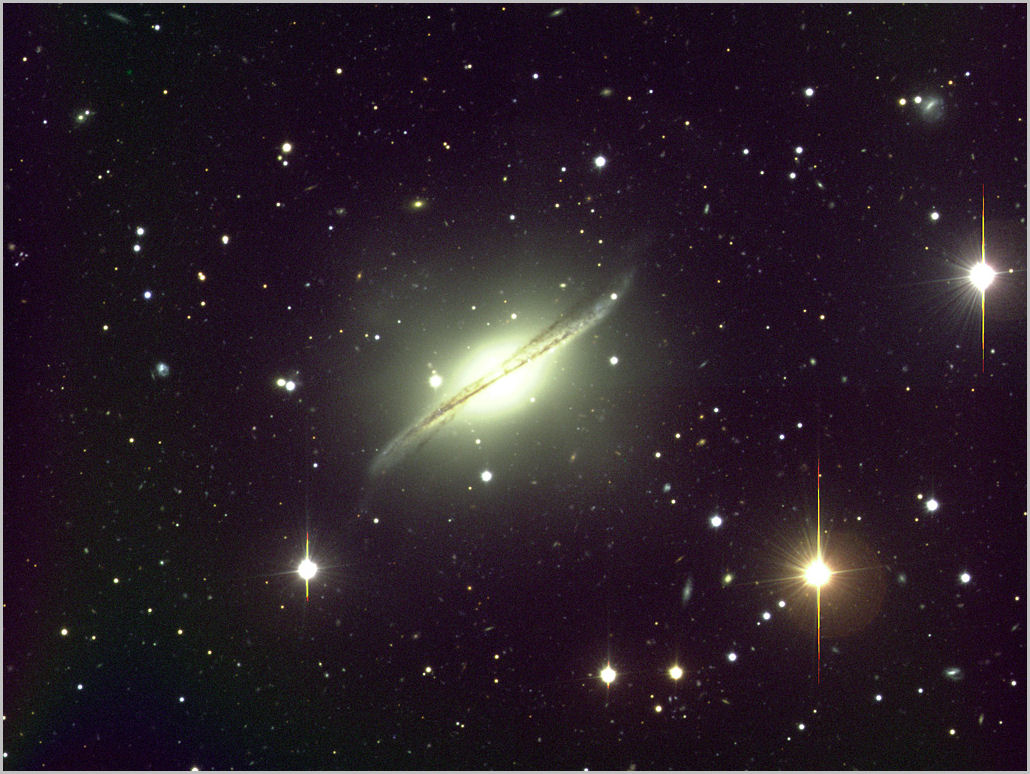
|
|
|
|
|
|